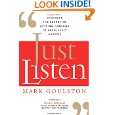 They say an expert is someone who learns more and more about less and less until finally he knows everything about nothing. I’m not sure if that’s true, but many of the senior executives I speak with come away from encounters with experts feeling they’ve been told a lot but still understand nothing.
They say an expert is someone who learns more and more about less and less until finally he knows everything about nothing. I’m not sure if that’s true, but many of the senior executives I speak with come away from encounters with experts feeling they’ve been told a lot but still understand nothing.
One of the most common issues that I am asked to address in my coaching sessions is how to communicate complex and difficult information to a lay audience. My coaching clients, who include engineers, scientists, and lawyers, sometimes understand on their own that they take too long to express their ideas, and are frustrated by it. More often, they’ve been counseled by others that they must be more concise and clear. As one senior person in a high-tech company told me when he hired me to coach his staff: “I ask people what time it is, and they tell me how to build a watch.”
The real issue is not in making your listeners understand—it’s how to help them get it efficiently.
 Just Listen by Mark Goulston is one of the few books I’ve read more than once (three times so far, actually) because it has given me many useful insights that have helped me both personally and professionally. Here are three:
Just Listen by Mark Goulston is one of the few books I’ve read more than once (three times so far, actually) because it has given me many useful insights that have helped me both personally and professionally. Here are three:
I wrote recently about using labeling as a mental strategy to deal with pre-speech jitters. I first learned about it from reading this book, as a way to take control of your “reptile brain” when it is about to hijack your behavior. We all know how to move from the fight/flight mode to the logical mode; we just don’t always know how to do it fast. Goulston calls it “getting through to yourself first.” About a week after reading it, I actually got to put it into practice during a nasty encounter with a very rude person at the mall during Christmas shopping. After the person left, the sales clerk thanked me for the way I handled it.
The concept of the persuasion cycle is also useful as a model for knowing how to get through to people. Speed and directness aren’t always the best way to get someone to agree with you. If you’re trying to convince someone to have Indian instead of Italian for lunch, that’s a pretty easy sell. But if you’re trying to drive fundamental change, you have to be more patient. People go through various stages in the persuasion cycle: from resisting to listening to willing to doing to glad they did. This book shares nine principles and twelve techniques that are useful at various stages of the persuasion cycle.
Another principle that resonates with me is “be more interested than interesting”, because it ties in so neatly with my own advocacy of the “outside-in” approach to persuasion. People will be persuaded for their own reasons, not yours, so the best persuaders are not those who are glib and articulate—the best persuaders earn the right to be persuasive by taking time to listen, show interest and empathize.
I enthusiastically recommend this book. Maybe that rude person will have read it by the next holiday season. The world would be a better place!
 Grandma used to say, “You catch more flies with honey than with vinegar.” We are much more willing to do something for someone we like. While that may be obvious, what is surprising is how powerful a part rapport can play in persuasion, especially when we don’t think about it. Companies such as Tupperware and Mary Kay are built on it; Joe Girard, the “world’s greatest car salesman” according to Guinness Book of World Records, became so by making friends with his customers, and then sending out monthly reminders that he liked them.
Grandma used to say, “You catch more flies with honey than with vinegar.” We are much more willing to do something for someone we like. While that may be obvious, what is surprising is how powerful a part rapport can play in persuasion, especially when we don’t think about it. Companies such as Tupperware and Mary Kay are built on it; Joe Girard, the “world’s greatest car salesman” according to Guinness Book of World Records, became so by making friends with his customers, and then sending out monthly reminders that he liked them.
When we look at the research that has been done on likability, we’ll see that some other well-worn phrases don’t fare so well. We’ll look at seven factors that make us likeable and hence more persuasive.
 One of the key themes of Practical Eloquence is that it is far, far better to get people to do things for their own reasons than for yours.
One of the key themes of Practical Eloquence is that it is far, far better to get people to do things for their own reasons than for yours.
You’ve heard the trite old saying: “Give a man a fish and you feed him for a day; teach him to fish and you feed him for life.” It applies to persuasion as well as teaching. When you provide external incentives to get someone to change their behavior, it’s like giving them a fish. It’s easy to get people to do things to gain rewards or avoid punishments, but the desired behavior only lasts as long as you have the ability to a) monitor the behavior and b) furnish the necessary reward or punishment. If you want to drive lasting behavior change, you’ve got to find ways to get people to do things for their own reasons, and the best way to do this is to use their sense of who they are to provide internal, long-lasting motivation.
I actually first learned this when I was 15, though I didn’t know it at the time. I was a member of the Jack Nelson Swim Club. Nelson had been an Olympic swimmer and Olympic coach, and was a legend in swimming circles. I wasn’t good enough to be coached directly by him, so when I was summoned to his office, I was terrified. I had been a smart-aleck and all-around pain in the rear to my coach and pretty much ignored his yelling and threats, but now I knew that I was in for it. I was already figuring out how I was going to tell my parents I had been thrown off the team.


